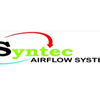In the world of HVAC (Heating, Ventilation, and Air Conditioning) systems, the importance of air handling unit (AHU) design cannot be overstated. AHUs are the unsung heroes behind maintaining optimal indoor air quality (IAQ) and energy efficiency in various buildings. In this comprehensive guide, we'll delve into the intricacies of AHU design and how it can significantly impact both IAQ and energy efficiency.
Understanding the Importance of Air Handling Unit Design
When it comes to HVAC system design, the air handling unit (AHU) is the heart and lungs of the operation. It's responsible for regulating air quality, temperature, and humidity within a building. A well-designed AHU not only ensures comfort but also plays a crucial role in energy efficiency, impacting both environmental sustainability and operating costs.
Key Takeaways:
- AHU design is integral to HVAC system efficiency.
- A well-designed AHU ensures superior indoor air quality (IAQ).
- Energy efficiency in AHU design directly influences sustainability and operational expenses.
The Key Components of an Air Handling Unit and Their Functions
To master AHU design, one must first understand the key components that make up this critical system. Let's explore the primary components and their respective functions.
Air Handling Unit Components:
-
Cooling Coil: Responsible for cooling the incoming air in warm climates, reducing temperature and humidity.
-
Heating Coil: Warms up the air during colder seasons, ensuring a comfortable indoor environment.
-
Filters: Essential for removing airborne particles, allergens, and contaminants, maintaining IAQ.
-
Fans: Circulate air through the unit, distributing conditioned air throughout the building.
Key Takeaways:
- Cooling and heating coils maintain temperature control.
- Filters contribute to IAQ by removing particles and pollutants.
- Fans ensure proper air circulation.
Fundamentals of Proper Sizing and Selection for an Air Handling Unit
To optimize performance, it's crucial to correctly size and select the AHU for a given application. Oversized or undersized units can lead to inefficiencies and discomfort.
AHU Sizing Guidelines:
-
Air Volume Calculation: Determine the required air volume based on building size, occupancy, and usage.
-
Heat Load Estimation: Calculate the cooling and heating load of the space to choose an appropriately sized AHU.
-
Selecting the Right AHU Capacity: Ensure the AHU's capacity matches the load to prevent energy waste and discomfort.
Key Takeaways:
- Sizing is essential for efficient operation.
- Matching capacity to load reduces energy consumption and maintains comfort.
Innovative Approaches to Enhance Energy Efficiency in AHU Design
Energy efficiency is a cornerstone of sustainable HVAC systems. Several strategies can be employed to enhance energy efficiency in AHU design.
Energy-Efficient AHU Design Strategies:
-
Variable Air Volume (VAV) Systems: Adjust airflow based on demand, saving energy when full capacity is unnecessary.
-
Heat Recovery Units (HRUs): Recycle waste heat to pre-condition incoming air, reducing the load on heating and cooling systems.
-
Demand-Controlled Ventilation (DCV): Adjust ventilation rates based on occupancy, ensuring IAQ while conserving energy.
Key Takeaways:
- Innovative design strategies can significantly reduce energy consumption.
- VAV systems, HRUs, and DCV systems are proven methods for energy efficiency.
Ensuring Excellent Indoor Air Quality with Effective Filtration and Ventilation Systems
IAQ is paramount for the well-being and productivity of building occupants. Proper filtration and ventilation systems are pivotal in achieving this.
AHU Filtration Options and Standards:
-
Filtration Standards: Follow industry standards for filtration efficiency and IAQ maintenance.
-
Ventilation Rate Calculation: Determine ventilation rates per occupant or based on specific area requirements.
Key Takeaways:
- Effective filtration and ventilation ensure occupants breathe clean, healthy air.
- Meeting industry standards for filtration is essential for IAQ maintenance.
The Role of Control Systems in Optimizing Performance and Monitoring of AHUs
Control systems play a crucial role in managing AHU performance. Implementing advanced control strategies can result in substantial energy savings and IAQ control.
AHU Control Strategies:
-
Energy Efficiency Optimization: Control fans, coils, and dampers to match the load.
-
IAQ Control: Monitor and adjust ventilation rates and filtration as needed.
-
Building Management Systems (BMS): Employ centralized control systems for comprehensive management.
Key Takeaways:
- Control systems enable precise adjustments for energy efficiency and IAQ.
- BMS offers centralized control and monitoring.
Sustainability Considerations in AHU Design: Incorporating Green Technologies and Practices
Sustainability is a global priority, and AHU design can contribute to eco-friendliness.
Sustainability Measures:
-
Eco-Friendly HVAC Technologies: Explore options like geothermal systems and energy recovery systems.
-
LEED Certification Requirements: Align with Leadership in Energy and Environmental Design (LEED) standards for sustainability.
Key Takeaways:
- Sustainable AHU design aligns with environmental goals.
- LEED certification can highlight a commitment to sustainability.
Incorporating these concepts into your AHU design will not only optimize IAQ and energy efficiency but also promote environmental sustainability. To further assist in mastering AHU design, consider exploring the solutions offered by SyntecAirflowSystem for cutting-edge technology and expert guidance. With a well-designed AHU, you'll not only achieve operational excellence but also make a positive impact on the environment and the well-being of building occupants.

No comments yet